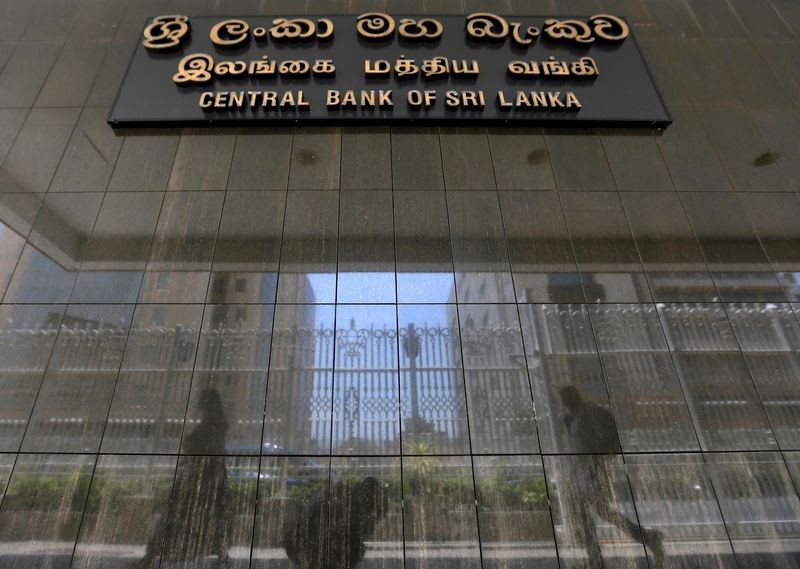By Uditha Jayasinghe
COLOMBO (Reuters) -Sri Lanka’s central financial institution set a brand new single coverage fee of 8% on Wednesday, easing financial settings under beforehand used benchmarks, in an effort to shore up the island nation’s fragile restoration from a deep monetary disaster.
The Central Financial institution of Sri Lanka (CBSL) stated late on Tuesday that it’s going to implement a single coverage rate of interest mechanism by introducing an in a single day coverage fee as a substitute of the prevailing fee hall.
“With this change, the effective reduction in the policy interest rate would be around 50 basis points from the current level of the Average Weighted Call Money Rate, which continues to serve as the operating target of the Flexible Inflation Targeting framework,” the financial institution stated.
Beforehand, the CBSL set two key charges, the Standing Deposit Facility Fee (SDFR) and the Standing Lending Facility Fee (SLFR), which economists had anticipated could be lowered by 25 foundation factors every to eight% and 9%, respectively.
The SDFR and SLFR will not be thought of coverage rates of interest, the financial institution stated.
“There is no direct signalling of an end to the easing cycle,” stated Thilina Panduwawala, head of analysis at Frontier Analysis.
“But they do say that without further policy easing they did not see further space for market rates to reduce. That might imply CBSL assumes rates can bottom out after this rate cut and that can make sense given their inflation forecast expects inflation to rise going into mid-2025.”
The South Asian financial system has progressively emerged from a debt disaster after the nation secured a $2.9 billion help package deal from the Worldwide Financial Fund (IMF) in March 2023.
Sri Lanka launched a long-awaited bond swap on Tuesday, a significant step to finishing its $12.55 billion debt restructuring and enabling its fragile financial restoration to proceed.
Bondholders have till Dec. 12 to vote in help of the proposal, which might see them swap current bonds for a set of latest points.

Completion of the practically 30-month debt restructuring course of and a price range aligned with the IMF programme may carry down rates of interest of presidency securities and increase credit score progress, analysts stated.
After a spot of two years, Sri Lanka’s financial system is predicted to develop by 4.4% in 2024, in keeping with the World Financial institution.




